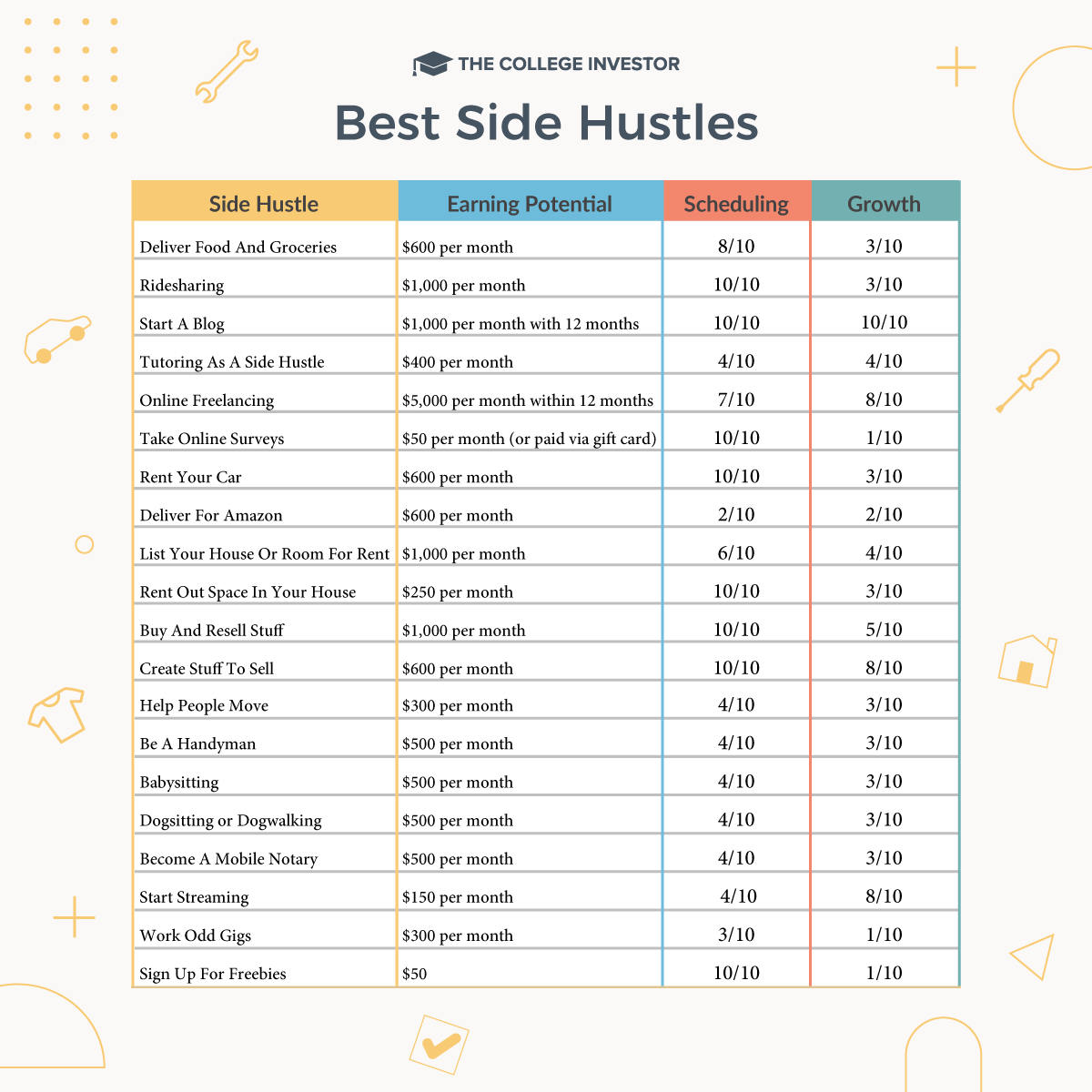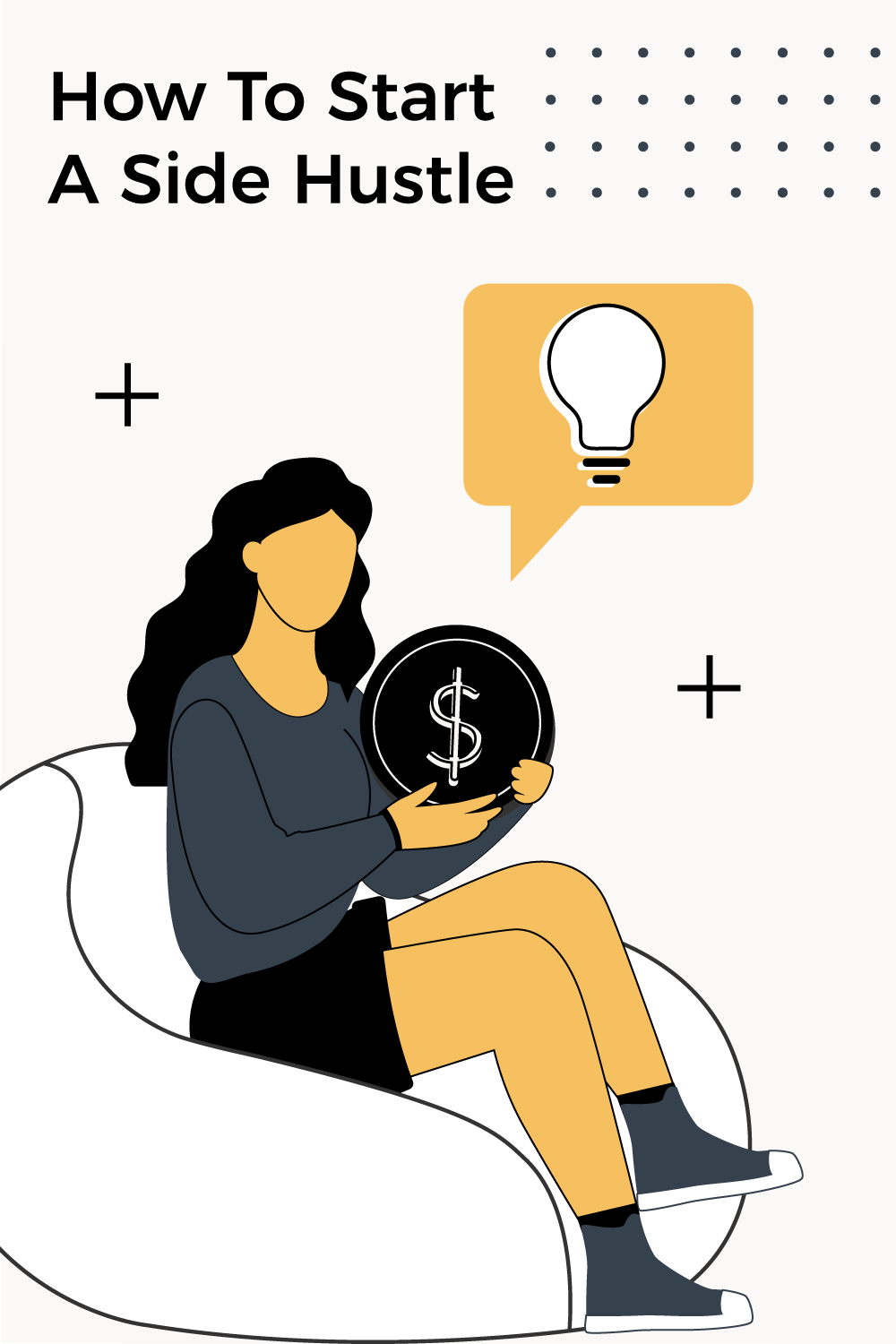
Curious about how to start a side hustle? You're not alone!
“Side hustle” is defined as a secondary business or job with the potential to produce extra income. Recent data indicates approximately 39% of working adults in the U.S. currently have a side hustle, which is a sharp increase from the number of adults who held a one prior to 2020.
A quick internet search will display endless lists of side hustle options, but there aren’t as many resources for how to get started on a side hustle.
So, we’re going to take you through the steps of how to start a side hustle for you and helping it go live, plus all the other things to keep in mind as you venture into new territory.
Find What You’re Good At
Regardless of your reason for wanting a side hustle, make sure it aligns with your skills and interests. If you don’t focus on this at the outset, you may quickly lose interest in and motivation for the work you once wanted to do. Really think about where you find joy in your work and what you can offer to others.
These questions are a good place to start:
- Why do I want to do this?
- What am I good at that I can capitalize on?
- What and where is the need for my skills and interests?
- How will this help me grow and/or meet my long-term goals?
- How will this impact my day-to-day life and routine?
- What is my timeline for doing this work?
Doing a quick analysis of the market you’re interested in will indicate what demand looks like for you today. If you can, focus on where that demand intersects your top skills and expand from there.
Don't ignore an opportunity just because you find that particular task easy or enjoyable. Just because you find it easy, doesn't mean everyone does. In fact, a task you find easy might be the perfect side hustle. It may mean that you are uniquely qualified.
Create A Business Strategy
Once you have answers to the big questions, you can put together a plan to get your newfound ideas off the ground and into the hands of others. If your side hustle requires investment, funding, or partnership, you’ll definitely want to put together a business plan. Even if you aren’t pursuing funding or partnership, it can still be helpful to lay out your overall vision for your side hustle.
Not sure what to include in your business plan? Start here:
- Identify your goals for having a side hustle.
- Describe what product(s) or service(s) you plan to provide.
- Establish a timeframe for getting started (and for completing your goals if you have a specific timeline).
- Use market research to outline the need for your skills and the areas with greatest opportunity.
- Identify the tools, software, and technology you’ll need to be successful.
- Create a budget to operate within.
- Design a plan to market yourself.
Remember, this doesn't have to be some formal 10 page paper? Even using your monthly budget, you might set a goal of how much money you want to earn, then 3 ways you can do it, and the timeframe - maybe one month.
You can do some simple research online, see if there are tools to make it easier, then get started!
Many side hustles don't require any up-front investment, beyond having a working cell phone or computer.
Know Your Time Commitment
If you’re venturing into side hustle territory, it’s likely you still have a full-time job (or school) to pay attention to. When you’re excited about something new, such as launching your first side hustle, it can be tempting to spend more time on what makes you happiest. But that’s not the best way to kickstart your new gig.
While there’s no one way to split your time between jobs, there are a few strategies that have helped others stay motivated and on-track while switching between the two. For instance, some only pursue their side hustle first thing in the morning, late at night, or strictly on weekends. Others find it best to utilize the down time they have in between work tasks during their day job. Personally, I like to dedicate a whole day or a few half-days to sit in uninterrupted work time.
Whatever you choose, make sure there are clear boundaries around when you’re “on” and when you’re “off.” Be diligent with the time you spend focusing on your day job versus any “free” time you have to devote to other priorities.
And don’t forget to check in with yourself. Are you getting enough sleep? Have you been outside recently? When is the last time you were fully present with friends or family? Don’t wait until it’s too late to take care of yourself! Know what burnout looks like for you, and implement strategies to maintain balance in your life so you can still enjoy your side hustle.
See our chart of the best side hustles where we compare the time commitment involved:

Continue to Learn And Grow
Depending on your side hustle – and how competitive the market is – you may need to uplevel your skills and competencies before you can market yourself. But even if you came into your side gig with many skills ready to offer, it’s still not a bad idea to continue seeking new ways to grow and learn.
Many people start a side hustle with the intention of it only ever being just that, but then their business expands enough to turn it into their main hustle. You never know where it might take you!
Consider these options for fine-tuning your skills and market versatility:
- Invest in a course or certificate to formalize your knowledge.
- Subscribe to industry news to stay current on trends and best practices.
- Join the local chapter of a relevant professional network.
- Get creative with your skill development to build job security.
- Seek mentorship from friends, colleagues, or peers.
Another important point here is the need to network yourself. Whether you’re just starting to think about a side hustle or you’re in the midst of building out your brand, you can gather a lot of information by talking with friends and family. It’s likely you know at least one person with a side hustle; not only can they share how they got started, but they can help brainstorm ways for you to utilize your skills.
The internet is another great place to turn to. As you think about what you’ll want to do, you may also need to consider how you’ll network yourself at a broader scale. How will you showcase your product or service and the value it has for others? What do you need to attract and retain customers? There are endless ways to market yourself through online and offline channels, so take advantage of them.
What Are The Tax Implications?
Bringing in extra income each month sounds great, but having a side hustle ventures into new financial territory for many of us. The obvious difference is that you’ll become a freelancer, working on a contract basis for a company or through your own company, which means you’ll need to understand your new tax situation. Here are some pro tips for setting yourself up for financial success as a freelancer:
Set aside 20-30% of your extra income for taxes. When you’re self-employed, there’s an additional tax added to your standard federal income tax rate. And taxes aren’t withheld as a freelancer the way they are in a traditional 9-to-5. This means it’s your job to report your extra income and pay taxes owed on that income.
You may need to pay estimated taxes. The IRS prefers that you pay taxes as you earn income throughout the year, not in one lump sum at tax time. If you expect to owe more than $1,000 in taxes from your side hustle, you’ll need to pay quarterly taxes. (If you only bring in a few extra hundred dollars a year, you can skip this).
Related: How To Pay Quarterly Estimated Taxes
Track gig income separately. Because you can typically write off some of the expenses of your side hustle, you’ll want to track your gig finances separately from your personal finances. Come tax season, it’ll be sooo much easier to sort bank statements and pull specific expenses.
You may also be wondering whether you should have your own LLC (Limited Liability Company) for a side hustle. The short answer? No. You don’t need to form an LLC to take on extra work, but there are some perks to having one.
The main benefit is having liability protection. Unlike sole proprietorships, an LLC provides peace of mind by separating your personal assets from your business liabilities. This means that if your business is sued, the party suing can only go after your business assets, not your personal assets.
Remaining a sole proprietorship has its advantages, too, though: it’s easy, it keeps costs low, and you can still deduct certain business expenses. You can always reassess your needs as your business grows.
The Wrap-Up
Despite what it seems, building a side hustle isn’t always easy – and it isn’t for everyone. Don’t let hustle culture alter your idea of “happiness” and “success,” especially if you are only considering a side hustle because they’re popular. For every person who has a side hustle, two or three others are content to do other things in their free time.
But if you are looking to start a side gig, get really clear on your “why.” Put some time and energy into planning out your path, talking to others with a side hustle, and researching market needs. Having a side hustle can be a great way to generate extra income, develop new skills, and find a creative outlet.
When you’re ready, read through the many ways you can earn extra income, then follow the steps laid out for you here!

Allison’s passion lies in decoding the ways of the world to help put others on a path to success. She likes to ask big questions, and it’s her goal to find answers to share with you. A self-acknowledged transplant to the Pacific Northwest, Allison likes to write about finance, policy, fitness, and anything else that sparks her curiosity.
Editor: Ashley Barnett Reviewed by: Robert Farrington
